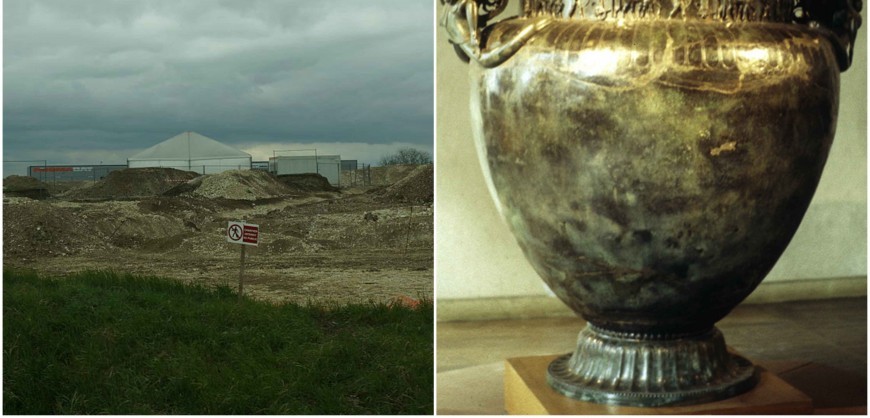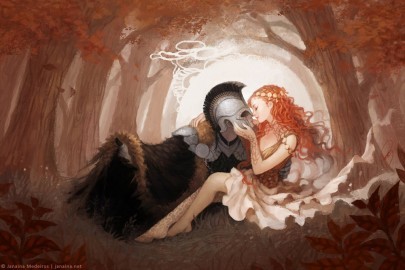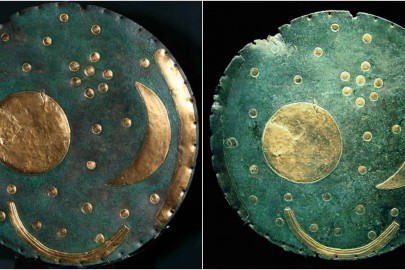French archaeologists have a mystery on their hands: is the 2,500 year old skeleton discovered in a royal tomb in northeast France on October 2014, male or female? And had this person been a Celtic prince or princess?
All the evidence points to the sex as male, given that the body had been interred inside an elaborate two–wheeled chariot. The skeleton’s neck was encircled with a 580 gram (1.2lbs) golden torque adorned with winged monsters. Around each wrist were gold bracelets, and the left bicep was surrounded with a lignite armband, a minor gemstone.
Found with the body was a a yard–wide bronze cauldron of Etruscan origin, exquisitely crafted Greek vases and bronze crockery.
Chief Archaeologist Bastien Dubuis said the chariot, cauldron and crockery are characteristic of royal tombs from the period of 500 B.C. The objects in the grave, also used in religious ceremonies, were meant to exhibit the power of the elite.
(The Vix Krater, an imported Greek wine-mixing vessel found in the famous grave of the “Lady of Vix”)
A number of princess’s tombs from the same time period have been excavated from northeast France, such as the Lady of Vix, discovered in northern Burgundy in 1953. Given the similarities, the latest tomb indicates that the person was of the Hallstatt Celts, an early Iron Age culture that populated most of northern Europe. In a statement, The National Archaeological Research Institute in France (Inrap), said the gold torque outweighed the Princess of Vix’s stiff collar. In addition, it seems the princess or prince had been buried in their best clothing, possibly used for parties or unique occasions.
(Excavations of the Archaeological Site of Moutot Lavau -Aube-)
What is perplexing and dividing archaeologists is the masculine nature of the tomb in contrast to the feminine appearance of the skeleton. The badly deteriorated bones and their positioning prevents any examination of the pelvis that wouldn’t damage the skeleton.
Of particular interest is the large bronze cauldron made in the Mediterranean style. It has four circular handles, each with the horned, bearded head of the Greek river god, Acheloos. The edge of the pot is enhanced with eight heads of lionesses. This indicates to experts that it might have been crafted either in Greece or by the Etruscan civilization inhabiting Tuscany in Italy. Some Celtic cultures buried a cauldron with a warrior for use in the afterlife. It is unclear whether the cauldron was buried with anything in it, but experts believe that at some time it may have contained wine.
It is hoped this tomb will assist in establishing trade connections between Northern European Celts and the rising civilizations in the Mediterranean area at the time. Moreover, the assumption that Greeks and Etruscans saw northern cultures as barbarians may need re-examination, as the site indicates some forms of interaction.
Also found was a black ceramic Greek wine pitcher, embossed with a gold image of Dionysius at a feast lying beneath a vine and opposite a female figure. A silver and gold sieved spoon for dividing wine from herbs and spices accompanied it. Inrap president Dominique Garcia noted that such objects are not found even in rich Greek tombs.






































